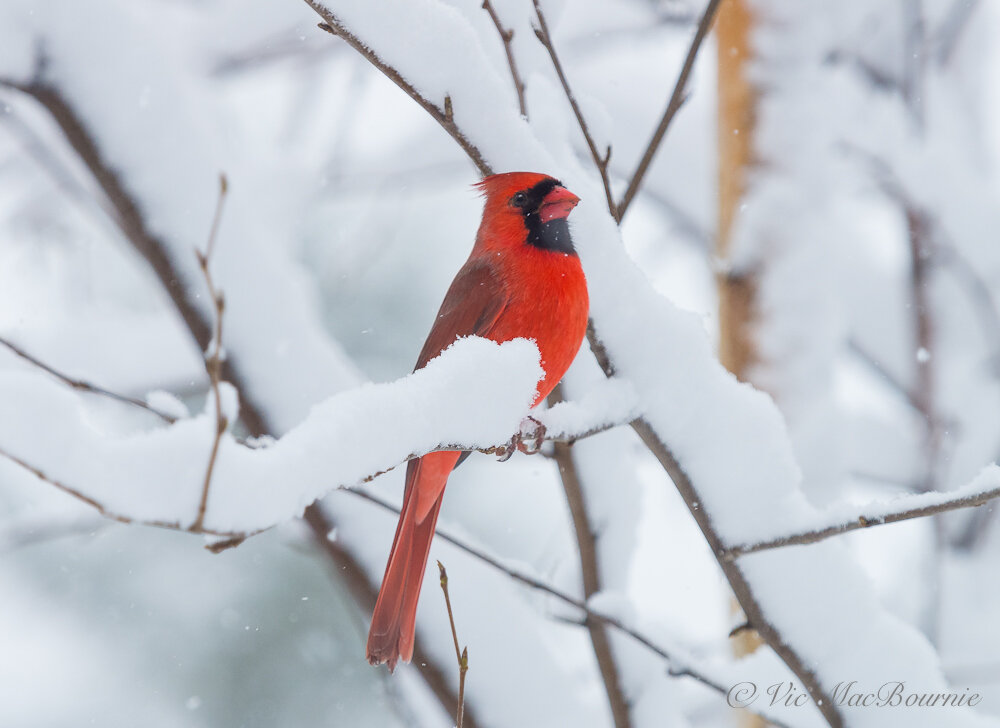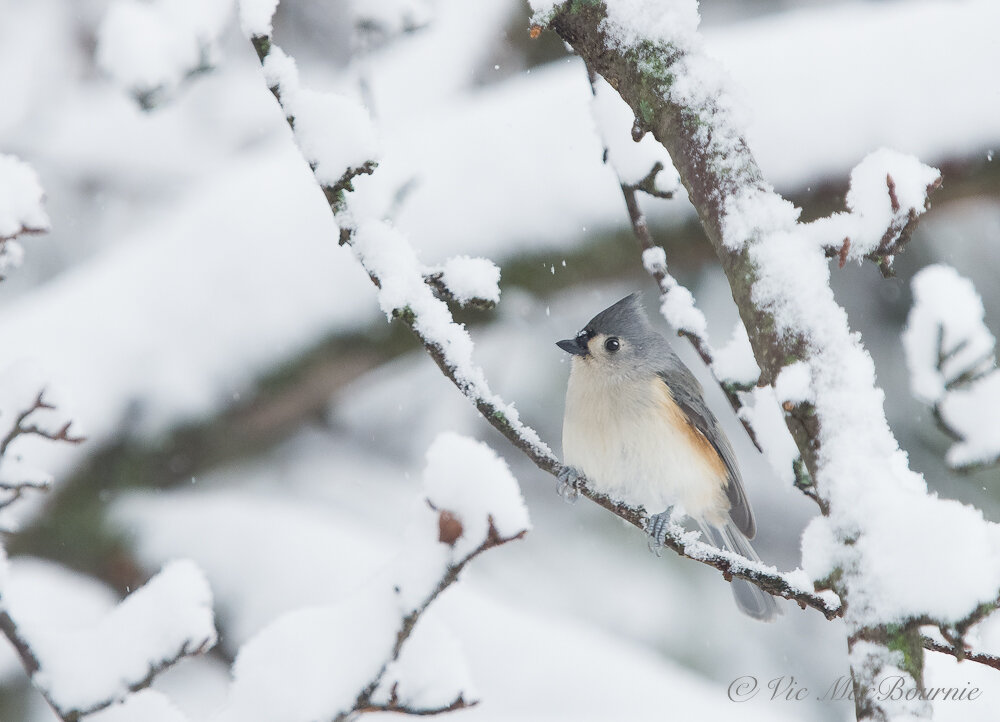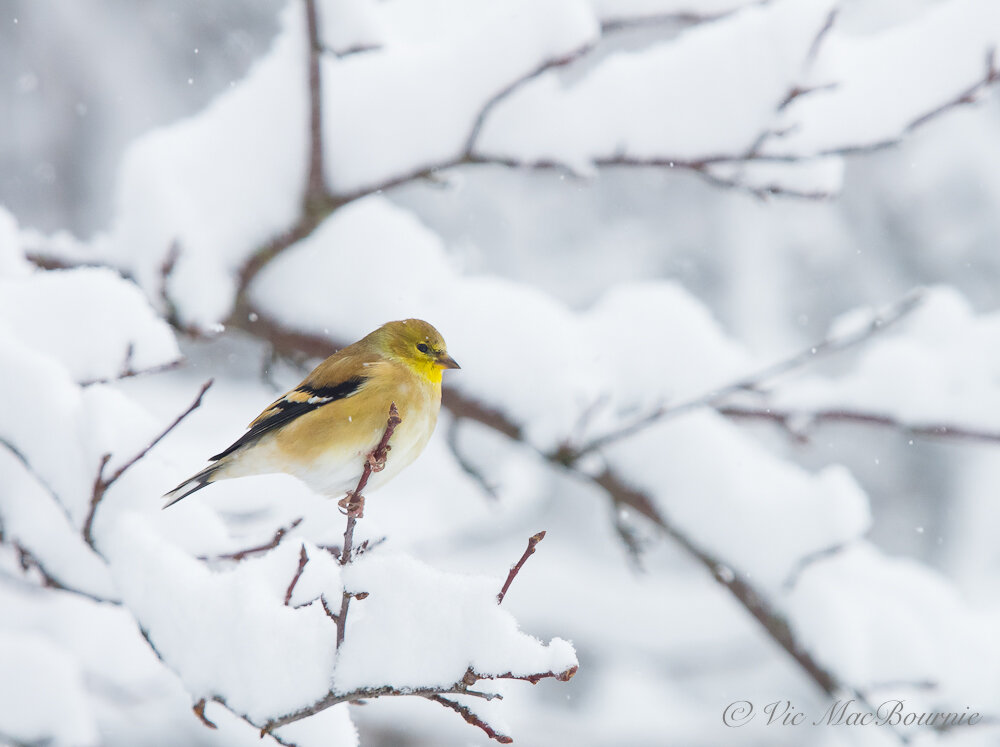Why we feed birds in our woodland gardens
Do we do it for them, or for our own enjoyment?
So, why do we attract backyard birds to our gardens?
What makes us spend far too much time and money creating the perfect environment for them? They are not our pets. They don’t snuggle up in bed with us every night, lick our hand or rub our faces in the morning to nudge us for their breakfast. And, they don’t come to our sides when we are hurt and feeling down.
But there is something that makes us pull on our boots most mornings, tramp through the snow and, with frozen fingers, fill our many backyard feeders with food we know very well will help the birds, but rarely will they count on to survive.
Our backyard gardens are often even designed around our feeders and native trees and flowers are planted in our gardens just to help our feathered friends.
At least part of the answer is unveiled in a study first published in May 2013 by David J. Horn and Stacey M. Johansen of Milliken University.
A comparison of bird-feeding practices in the United States and Canada concluded at the time that millions of Americans and Canadians participate in the feeding of wild birds. Researchers surveyed 1,291 individuals from 48 states and 7 Canadian provinces between the fall of 2005 and winter of 2008-2009.
Much has changed since then, but their findings were revealing even then.
A male cardinal waits for a turn at the bird feeder during an early-winter snowstorm.
Respondents were primarily female (67 per cent) and nearly 60 per cent were between the ages of 45 and 64. Researchers found that the majority had been feeding birds for close to 20 years.
Most who responded to the survey also offered alternative foods in addition to traditional bird seed and provided other resources besides food (such as birdbaths) to attract birds.
This is all very interesting, but did these researchers ever actually find out why we feed the birds. The survey found that 84 per cent of the respondents fed birds “because it brought nature and accompanying sounds of nature to their yards. Almost 80 per cent considered it a hobby, and did it to “help the birds.” Almost 70 per cent felt “attracting more bird species, and a greater number of birds (41 per cent), and no pests (35 per cent) would make their bird-feeding experience more satisfying.”
A Tufted Titmouse waits out a snowstorm.
Those numbers certainly haven’t changed much over the years – more species, more birds and fewer pests. It’s what we all, who feed birds, work toward.
“I don’t feed the birds because they need me; I feed the birds because I need them.”
Other reasons for feeding included providing therapy or relaxation, studying bird behaviour and identification, and educational experiences for their children.
I don’t think much has changed in the years since the study accept that maybe, as we age, the importance of the therapy and relaxation part has increased in importance. And, for many of us, the educational experiences are more for our grandchildren than our own children.
Also of interest in the study was the conclusion that women are more likely to provide special plantings for birds than their male counterparts.
And, it’s no surprise, the researchers concluded that people who feed birds aren’t necessarily traditional “birders” who take great pains to list the species they identify.
I have always thought feeding birds was a very different hobby to bird watching. Both are passionate about bird but they are very much two different types of bird lovers – one more analytical, the other just enjoying being in the presence of birds.
Both groups, however, provide researchers invaluable information about the health and state of our backyard birds.
Since the survey, the number of people in the United States and Canada who feed birds has continued to climb. Specific numbers are not available but it is estimated that more than 57 million households in the United States alone feed backyard birds and spend more than $4 billion annually on bird food alone.
Project FeederWatch is source of information
Proof of this passion is made more evident by the fact that more than 25,000 people who feed birds collaborate with Project FeederWatch, a program connected with the CornellLab in the school of Ornithology, that assists researchers in the collection of data on backyard birds.
Project FeederWatch is a joint research and education project of Birds of Canada and the Cornell Lab of Ornithology. It plays an important role in learning about bird numbers any given year and their distribution across Canada and the United States. We, in a sense, become the researchers providing much of the data used to keep track of the health and state of the nations’ birds, while, at the same time, maintaining our interest and adding knowledge about our hobby.
How feeding the birds helps us
Researchers know that bird feeding influences nature, what they did not know is how feeding influences the people who feed those birds.
Ashley Dayer, an assistant professor at Virginia Tech, explains “we wanted to know how they (people who feed birds) respond to their observations. For example, how do they feel if they see sick birds at their feeders, and what actions do they take to address these observations?”
In a study conducted in collaboration with researchers from the Cornell Lab of Ornithology and the Odum School of Ecology at the University of Georgia, researchers found that most people noticed natural changes in their backyards that could be due to feeding, including increased numbers of birds at their feeders, predators frequenting their gardens, or sick birds at their feeders.
Goldfinch in a snowstorm waiting its turn at the feeder.
The Science Daily journal quotes Dana Hawley, an associate professor at Virginia Tech: “More and more, we see that humans are interacting less with nature and that more of our wildlife are being restricted to areas where there are humans around. Looking at how humans react to and manage wildlife in their own backyards is very important for the future of wildlife conservation and for understanding human well-being as the opportunities for people to interact with wildlife become more restricted to backyard settings,” Hawley's research program focuses on wildlife disease ecology and evolution.
Darryl Jones, a professor at Griffith University in Australia, notes that: “Feeding wild birds is a deceptively commonplace activity. Yet, it is one of the most intimate, private, and potentially profound forms of human interaction with nature.”
He goes on to explain that: … “people who feed birds are alert to a wide range of additional natural phenomena.”
Photography: Another reason we attract birds
For many of us, photographing birds in our garden is reason enough to attract backyard birds. Woodland gardeners, especially, have good reason to pursue this hobby with great vigour. With good ecological planning, using an abundance of native trees, shrubs and flowers, our gardens are able to attract a wide variety of backyard birds, many of whom may not be enticed to a more traditional garden.
Being able to photograph more rare birds like warblers, vireos, thrushes and other insect-eating birds is without a doubt an added bonus we bird lovers/bird feeder and photographers accept with open arms.
By becoming more intimate with our gardens and its visitors, we recognize subtle changes in the environment that may influence the type of birds, flowers and shrubs that make up our environment. As photographers, our visual senses are heightened by the first flash of orange in the spring garden announcing the arrival of the Baltimore orioles.
We eagerly await the first signs of hepatica emerging in early spring. An opportunity to photograph blood root, the profusion of pink flowers of the redbud and the lovely bracts of the dogwoods.
Photography gets us out into the garden. Feeding and attracting the widest variety of birds gives us an endless stream of colourful subjects that bring life to our gardens even in the coldest of winters.
If you ask me why I attract birds to our garden, having the joy of capturing a split second of their life and sharing that moment with others on this blog and in other social media sites is reason enough.
But, I am well aware that these birds and other woodland creatures offer much more than photographic subjects.
These birds play a vital part in our everyday life. Their antics, whether they are photographed, counted as part of project FeederWatch or just enjoyed, bring movement, life and a great sense of joy to our lives.
That is why we feed the birds.
While I get great enjoyment from my bird feeding stations, providing natural food sources to our feathered friends is always the goal we should aspire to in our gardens. I have written a comprehensive post on feeding birds naturally. You can read about it here.
This page contains affiliate links. If you purchase a product through one of them, I will receive a commission (at no additional cost to you) I only endorse products I have either used, have complete confidence in, or have experience with the manufacturer. Thank you for your support.



